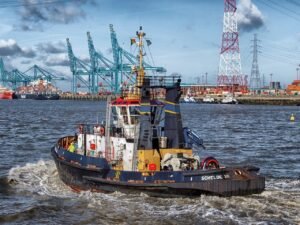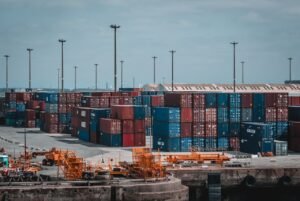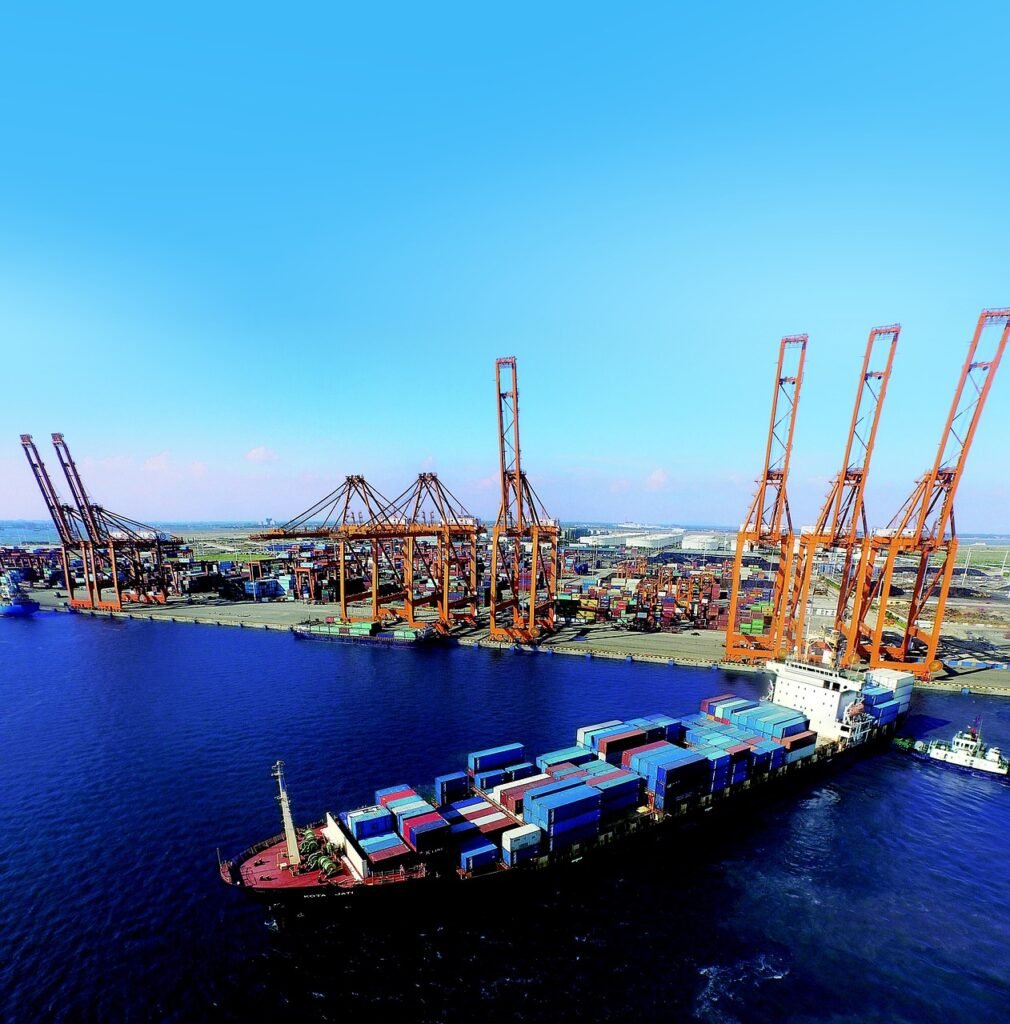Container and cargo handling is a crucial aspect of maritime logistics, particularly in the U.S., where seaports serve as vital gateways for international trade. Here’s everything you need to know about container and cargo handling in U.S. seaports:
1. Overview of U.S. Sea Ports
- Key Ports: The U.S. has several major sea ports that handle significant container and cargo traffic, including the Port of Los Angeles, Port of Long Beach, Port of New York and New Jersey, Port of Savannah, and Port of Houston.
- Volume: The U.S. ports handle millions of TEUs (Twenty-Foot Equivalent Units) annually, with the largest ports dealing with upwards of 9 million TEUs per year.

2. Types of Cargo Handled
- Containerized Cargo: Includes goods packed in standard shipping containers, typically 20 or 40 feet long. This is the most common form of cargo handled at major U.S. ports.
- Bulk Cargo: Involves large quantities of unpackaged goods like coal, grain, and oil, which are loaded directly into the cargo hold of a ship.
- Breakbulk Cargo: Includes items that must be loaded individually, such as vehicles, machinery, or large pieces of equipment.
- Liquid Bulk Cargo: Consists of liquid commodities such as crude oil, chemicals, and liquefied natural gas (LNG).

3. Container Handling Equipment
- Cranes: Ports use large gantry cranes to load and unload containers from ships. These cranes can lift containers weighing up to 40 tons.
- Straddle Carriers: These vehicles are used to transport containers around the port and stack them for storage or further transport.
- Reach Stackers: These machines are used to lift and move containers over short distances, typically for stacking or loading onto trucks or trains.
- Automated Guided Vehicles (AGVs): Increasingly used in modern ports, AGVs are driverless vehicles that transport containers around the terminal.
4. Port Infrastructure
- Container Terminals: Specialized areas within the port designed to handle containerized cargo. They include berths for ships, storage yards for containers, and access to rail and road networks.
- Warehousing: Ports provide warehousing facilities for storing goods before they are transported inland.
- Intermodal Facilities: These connect ports to rail and truck networks, enabling efficient transfer of cargo between different modes of transportation.

5. Customs and Regulatory Procedures
- Customs Clearance: All cargo entering or leaving U.S. ports must go through customs clearance. This process involves the inspection of goods, documentation, and payment of duties and taxes.
- Security Measures: The U.S. implements strict security protocols at ports, including the Container Security Initiative (CSI) and the Customs-Trade Partnership Against Terrorism (C-TPAT), to ensure the safety of imported and exported goods.
- Environmental Regulations: Ports must adhere to environmental regulations concerning emissions, waste disposal, and water quality to minimize the environmental impact of port operations.
6. Port Operations and Efficiency
- Automation: Many U.S. ports are increasingly adopting automation to enhance efficiency. Automated cranes, vehicles, and systems help reduce handling times and improve safety.
- Port Congestion: Ports, especially on the West Coast, can experience congestion, particularly during peak seasons. This can lead to delays in cargo handling and increased costs.
- Port Labor: Port operations in the U.S. are highly dependent on unionized labor, particularly the International Longshore and Warehouse Union (ILWU), which plays a significant role in negotiations and labor relations.
7. Challenges and Trends
- Global Supply Chain Disruptions: U.S. ports have faced challenges due to global supply chain disruptions, including delays caused by the COVID-19 pandemic and geopolitical tensions.
- Sustainability Initiatives: Ports are investing in green technologies, such as electric cranes and low-emission equipment, to reduce their carbon footprint.
- Expansion Projects: Many ports are undergoing expansion to handle larger ships and increased cargo volumes, including dredging to deepen harbors and the construction of additional berths.

8. Key Players and Stakeholders
- Port Authorities: Manage and oversee port operations, infrastructure development, and regulatory compliance.
- Shipping Lines: Companies that operate container ships and provide sea freight services, including giants like Maersk, MSC, and COSCO.
- Freight Forwarders: Facilitate the transportation of cargo, handling logistics, documentation, and coordination with various transport modes.
- Terminal Operators: Companies that manage the day-to-day operations of container terminals, ensuring the efficient loading, unloading, and storage of cargo.
9. Economic Impact
- Trade: U.S. ports are critical to the economy, handling a significant portion of the country’s imports and exports, including consumer goods, raw materials, and industrial products.
- Jobs: Ports generate thousands of jobs directly and indirectly, from dockworkers to truck drivers and logistics professionals.
- Revenue: Ports contribute significantly to local and national economies through fees, taxes, and related business activities.

U.S. sea ports are vital hubs in the global supply chain, handling millions of containers and tons of cargo each year. Understanding the complexities of container and cargo handling, from the equipment used to the regulatory procedures involved, is essential for anyone engaged in maritime logistics. With ongoing investments in technology and infrastructure, U.S. ports are continually evolving to meet the demands of global trade while addressing challenges like congestion and environmental sustainability.

